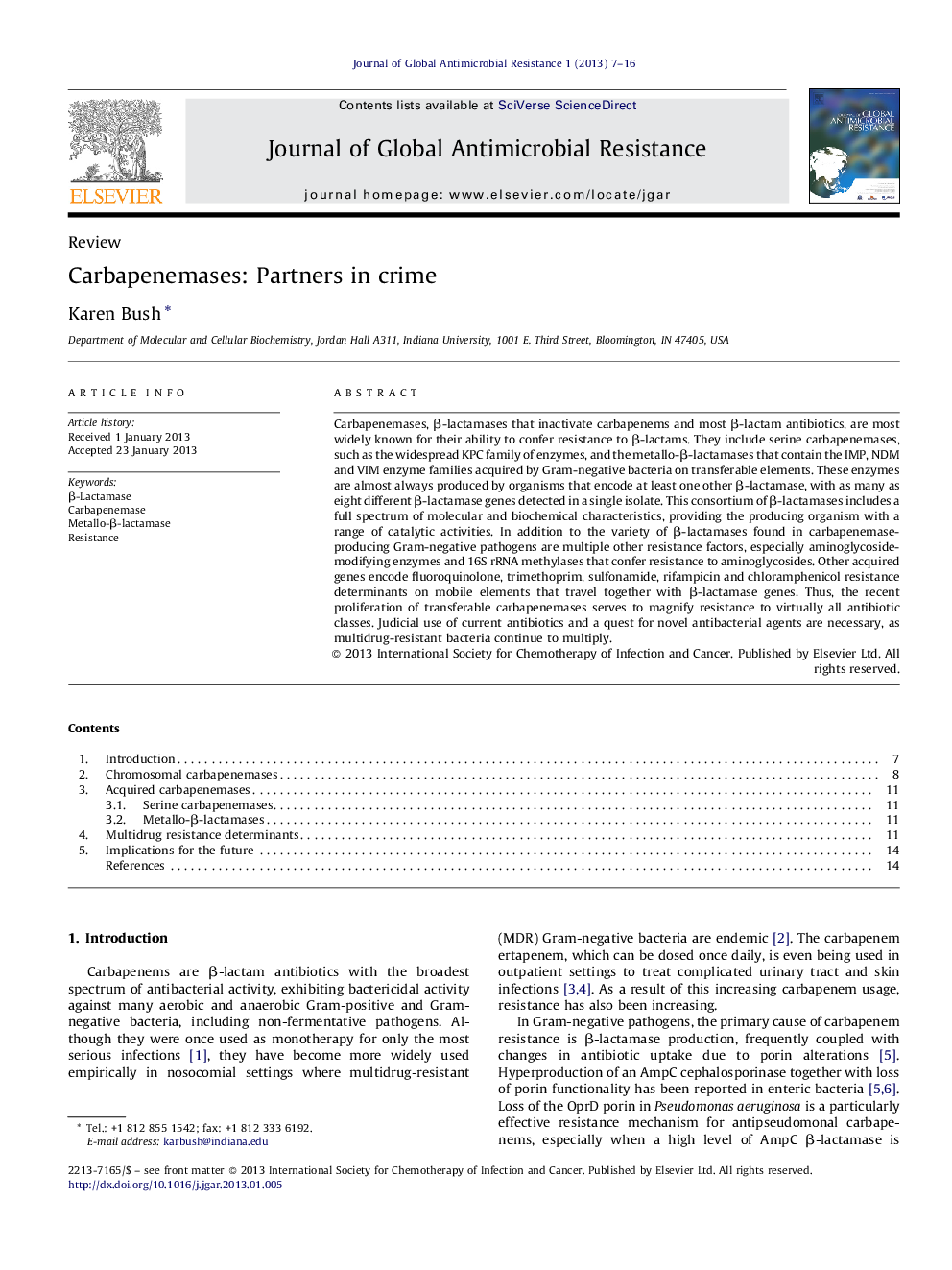| Article ID | Journal | Published Year | Pages | File Type |
|---|---|---|---|---|
| 3405772 | Journal of Global Antimicrobial Resistance | 2013 | 10 Pages |
Carbapenemases, β-lactamases that inactivate carbapenems and most β-lactam antibiotics, are most widely known for their ability to confer resistance to β-lactams. They include serine carbapenemases, such as the widespread KPC family of enzymes, and the metallo-β-lactamases that contain the IMP, NDM and VIM enzyme families acquired by Gram-negative bacteria on transferable elements. These enzymes are almost always produced by organisms that encode at least one other β-lactamase, with as many as eight different β-lactamase genes detected in a single isolate. This consortium of β-lactamases includes a full spectrum of molecular and biochemical characteristics, providing the producing organism with a range of catalytic activities. In addition to the variety of β-lactamases found in carbapenemase-producing Gram-negative pathogens are multiple other resistance factors, especially aminoglycoside-modifying enzymes and 16S rRNA methylases that confer resistance to aminoglycosides. Other acquired genes encode fluoroquinolone, trimethoprim, sulfonamide, rifampicin and chloramphenicol resistance determinants on mobile elements that travel together with β-lactamase genes. Thus, the recent proliferation of transferable carbapenemases serves to magnify resistance to virtually all antibiotic classes. Judicial use of current antibiotics and a quest for novel antibacterial agents are necessary, as multidrug-resistant bacteria continue to multiply.
